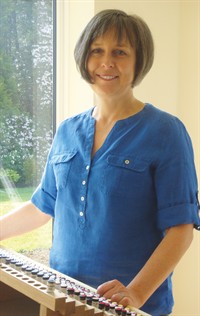Contact a practitioner
In the right hands, Field Control Therapy offers boundless possibilities for restoring the human body’s capacity to function as nature intended. However, the effectiveness of a tool is not found in the design of the tool itself, but in the skill, training and expertise of the user. This is especially true of FCT.
The testing – and subsequent diagnosis and treatment – depends for its success on the competence of the practitioner. So let’s summarise the views on this subject as expressed by Dr. Savely Yurkovsky, the father of FCT. He says that as with any form of medical diagnosis, there needs to be a rapport between practitioner and patient. The practitioner has to be knowledgeable enough to ask the right questions of the body’s “energy field”, and in a way that enables that “energy field” to respond with the right information, rather than just in a general sense. In other words, everything ultimately depends on the abilities of the practitioner, especially at the testing stage.
The structure of the testing procedure is comprehensive, and follows a strict sequence. This allows the practitioner to receive a clear message from the unique energetic responses of each particular patient’s body. Again, the correct interpretation of this message ultimately rests on the practitioner’s insight, together with a firm grasp of the scientific and medical principles that form the basis of FCT.
A profile of Ann Pearcey, FCT practitioner
 Ann has studied FCT in depth and has qualifications and long experience spanning different disciplines in conventional, complementary and emerging medical practices.This includes training as a dentist, a profession that incorporates the principles of the body’s anatomy and physiology. Ann qualified as a dental surgeon in 1983, and has spent most of the subsequent years in general practice. She became more and more alarmed at the growing number of chronic disease states in her patients, and their reliance on allopathic medication.
Ann has studied FCT in depth and has qualifications and long experience spanning different disciplines in conventional, complementary and emerging medical practices.This includes training as a dentist, a profession that incorporates the principles of the body’s anatomy and physiology. Ann qualified as a dental surgeon in 1983, and has spent most of the subsequent years in general practice. She became more and more alarmed at the growing number of chronic disease states in her patients, and their reliance on allopathic medication.
Why didn’t allopathic medicine work, and what part did the controversy surrounding the use of mercury amalgam fillings play as a primary causative factor in patients’ disease states?
In 2006, Ann took the major step to take time out from dentistry, and used her knowledge gained as a dental student to research alternative therapies. The path she chose, ultimately, was a bio-resonance therapy, which she believed was based on the sound principle that the body would heal itself, if it could only clear itself of toxins and pathogens. She studied and practised this therapy for five years, before finally discovering Dr. Yurkovsky, and his ground-breaking work in Field Control Therapy.
Now, having followed closely and meticulously in the footsteps of Dr. Savely Yurkovsky, Ann now recognises how fundamental it is to remove mercury and other heavy metals by the application of FCT, rather than chelating methods. One of the most common risks of chelation, is the redistribution of heavy metals throughout the body’s organs and tissues, and this can result in further, and often different, symptoms of ill-health. What’s more, if there is heavy metal accumulation, it suggests that the excretory organs are already weakened. Unlike other therapies, FCT supports these organs to eliminate the heavy metals.
To contact a practitioner use the form below.